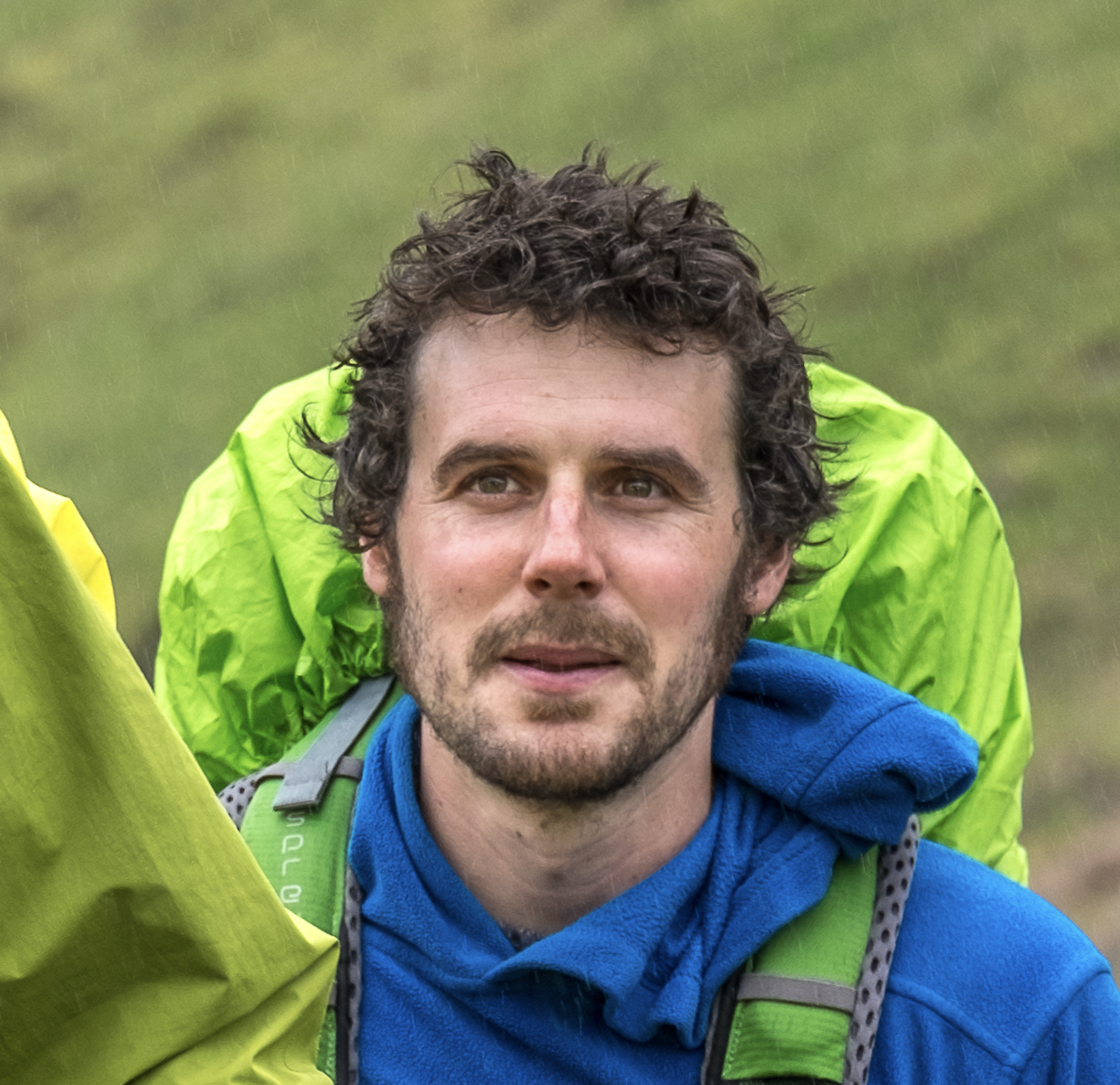The results of this year's Close-up Photographer of the Year Challenge have been announced.
The photography challenge – which aims to inspire a wider appreciation of nature’s wealth, encourage a deeper connection to often-overlooked animals, plants and landscapes, and kindle a desire to protect them – has a different theme each year – 2023's was 'water'.
The following gallery features all 12 winning images, from a newt feeding on frogspawn at night (overall winner) and rain-covered slime mould to frozen poppies and a spying snake.
12 fabulous photos from the competition
Between the Stars - Tibor Litauszki (overall winner)

‘In Germany, where I live, there are many clear and slow-flowing streams that provide excellent habitat for alpine newts. I have been following their lives for years, and last year was no exception. A few days after the frogs lay their eggs, at dusk, the newts appear and feast on the spawn all through the night. I wanted to capture this moment underwater. To do this, I placed my camera in an underwater housing, attached it with weights, and placed it under the frogs’ eggs. I was a bit nervous at first because I wasn't sure if the underwater housing was completely waterproof. But I figured that if no bubbles appeared, my camera would stay dry. I manually set the focus on the lens beforehand and hoped to get lucky. Waiting nearby until it got dark, I illuminated the first newt that appeared with an LED light and triggered the camera with a homemade wired remote release.’ Tibor Litauszki
Poppies Tiarella in Ice – Ian Gilmour (2nd place)
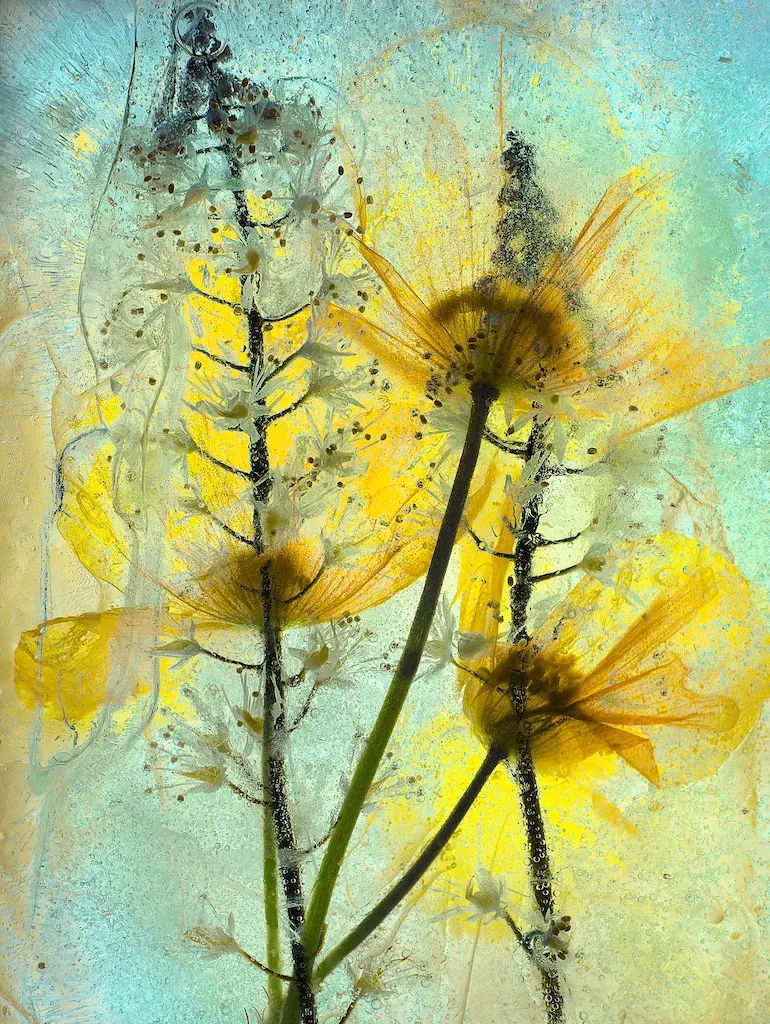
‘I submerged some wild poppies in water with tiarella flowers and froze them overnight. I then placed the frozen block on a lightbox and photographed them using my Venus Laowa super macro lens. My first attempt was unsuccessful as the water was cloudy, so I boiled the water before re-freezing for the second attempt, which seemed to give a better result.’ Ian Gilmour
The Ice Skater – Sebastien Blomme

‘For a long time, the idea of capturing the graceful ballet of dragonflies flying over the Garonne (the river that winds near my home) had been running through my head. It’s enchanting to observe hundreds of these creatures circling, skilfully capturing midges and other insects in mid-flight every summer. One day, I settled in the water at a spot where I had noticed a dragonfly regularly returned to rest. I waited patiently for its return. At each appearance I fired my camera in burst mode, hoping to capture the moment when its wings would be spread in all their glory. After a hundred attempts, I finally managed to obtain the image I desired.' Sebastien Blomme
- How to photograph the movement and motion of wildlife
- How to take great underwater photos of wildlife
- How to photograph a spider's web
You See Better With Four Eyes – Gabi Swart

‘This picture was taken in a pond near Ladenburg, Germany. It was shot from a low angle so that the reflection of the frog’s eyes are just visible. I then decided to turn it upside down to confuse the viewer and encourage him/her to look more closely.' Gabi Swart
Tony North – Milking Bonnets
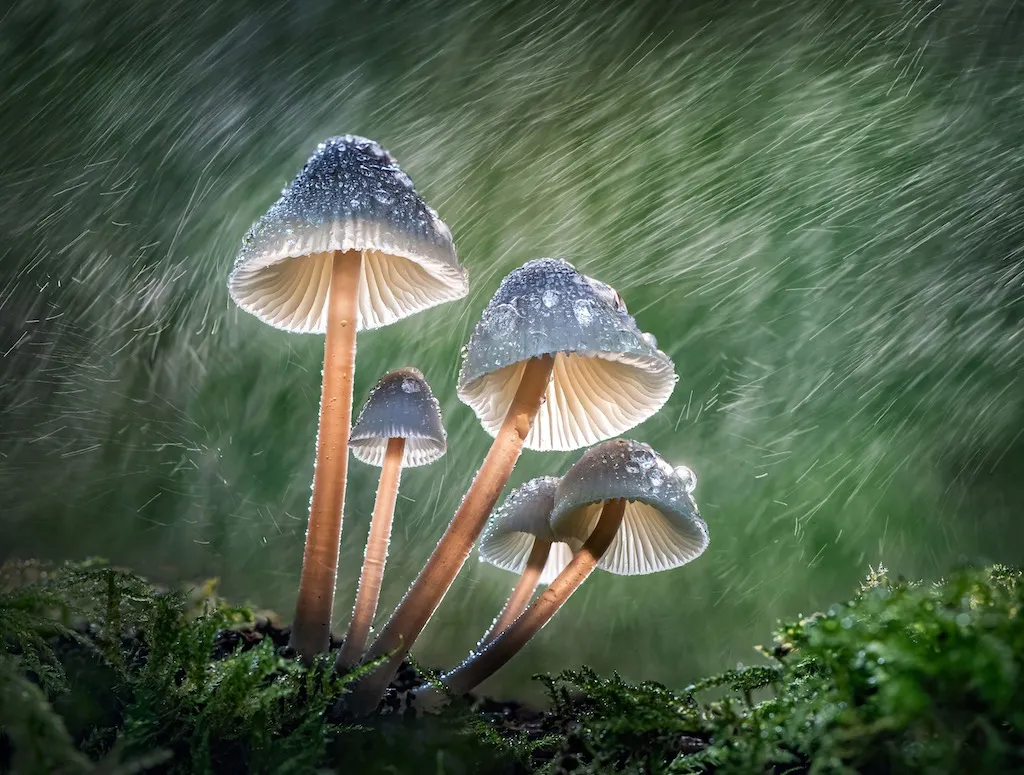
‘I found this clump of mushrooms with an almost perfect shape and number in Marbury Country Park, UK. I lit the scene from behind with an LED panel, both to fill the bonnets with light and to illuminate the droplets, which I created with a fine mist spray. My aim was to enhance the natural beauty of the fungi by adding more light and atmosphere. I focus bracketed 40 frames of the bonnets, then took one shot with the fungi and the “rain”. I combined the files later in Photoshop.’ Tony North
Slime Moulds and Raindrops – Barry Webb
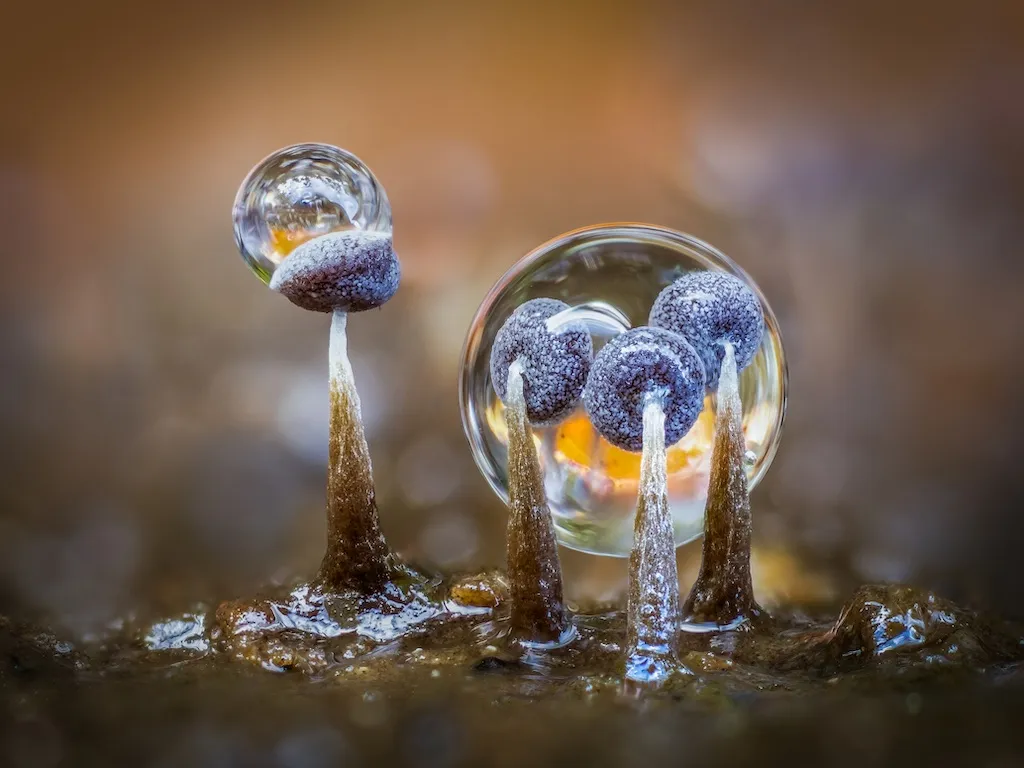
‘Following overnight rain, I came across a colony of 2mm tall Physarum album slime mould fruiting bodies on a short section of beech branch, lying in leaf litter on the woodland floor. On closer inspection, I spotted this little group encased in raindrops. Carefully positioning the branch in a suitable position, taking care not to disturb the droplets, I shot 101 focus bracketed images to capture the full depth of the subjects. The resulting images were focus stacked using Zerene Stacker software.’ Barry Webb
Periscope – Marco Maggesi
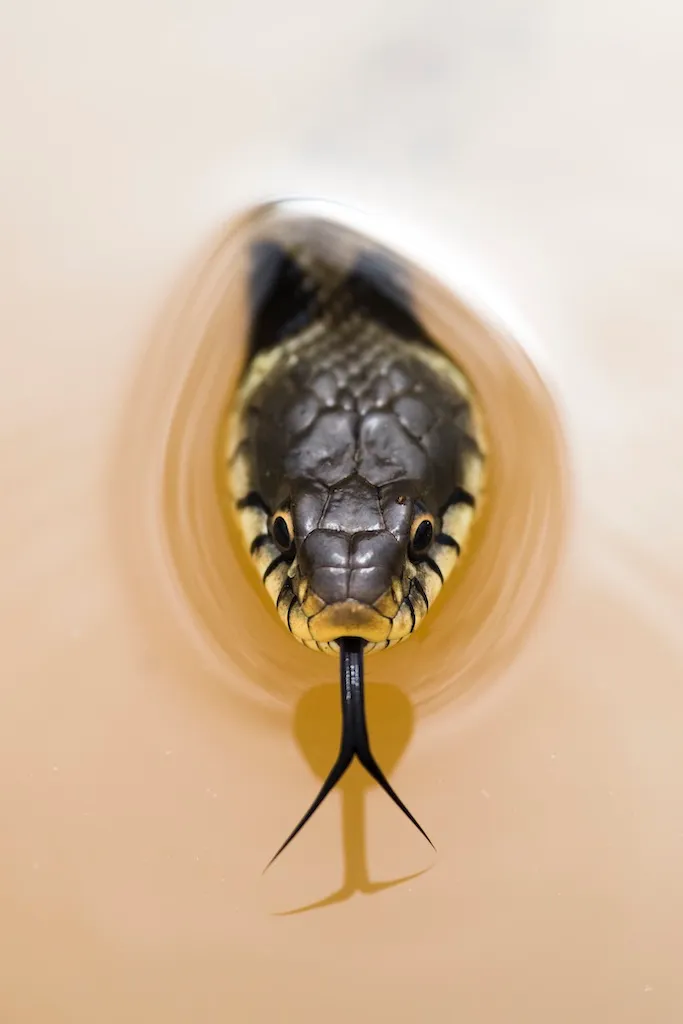
‘This beautiful snake was looking for prey in a pond. I was really lucky because it stopped right in front of me to taste the air. The light was very soft because it was a cloudy day. I used a 300mm lens to capture this portrait. I will never forget this encounter.’ Marco Maggesi
Plastic Sailors – Sandra Stalker
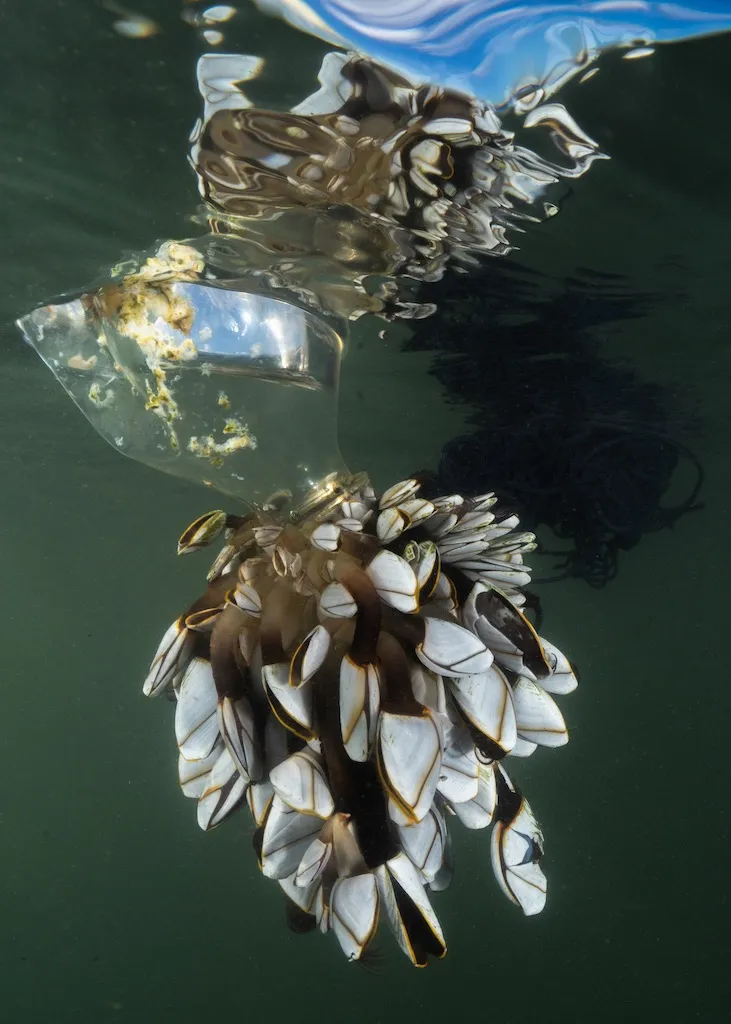
‘Hundreds of items covered in gooseneck barnacles wash up on Chesil Beach, in the UK, every year, carried there by winter storms. These are non-native to the UK and have usually travelled across the Atlantic. This particular item was a plastic bottle with a colony of goose barnacles and some fishing net I found on the beach. To tell the story of ocean litter becoming a habitat for wildlife, I took them to the sheltered side of Chesil in Portland harbour and re-floated them there. The water was about 8°C, I was in a wetsuit and the water was incredibly choppy from the wind, which kept blowing the bottle away from me. I shot upwards as I loved the reflection on the surface of the water, while keeping the bottle and barnacles as the main focus of the image.’ Sandra Stalker
Sparkling Crown – Claudia Gaupp
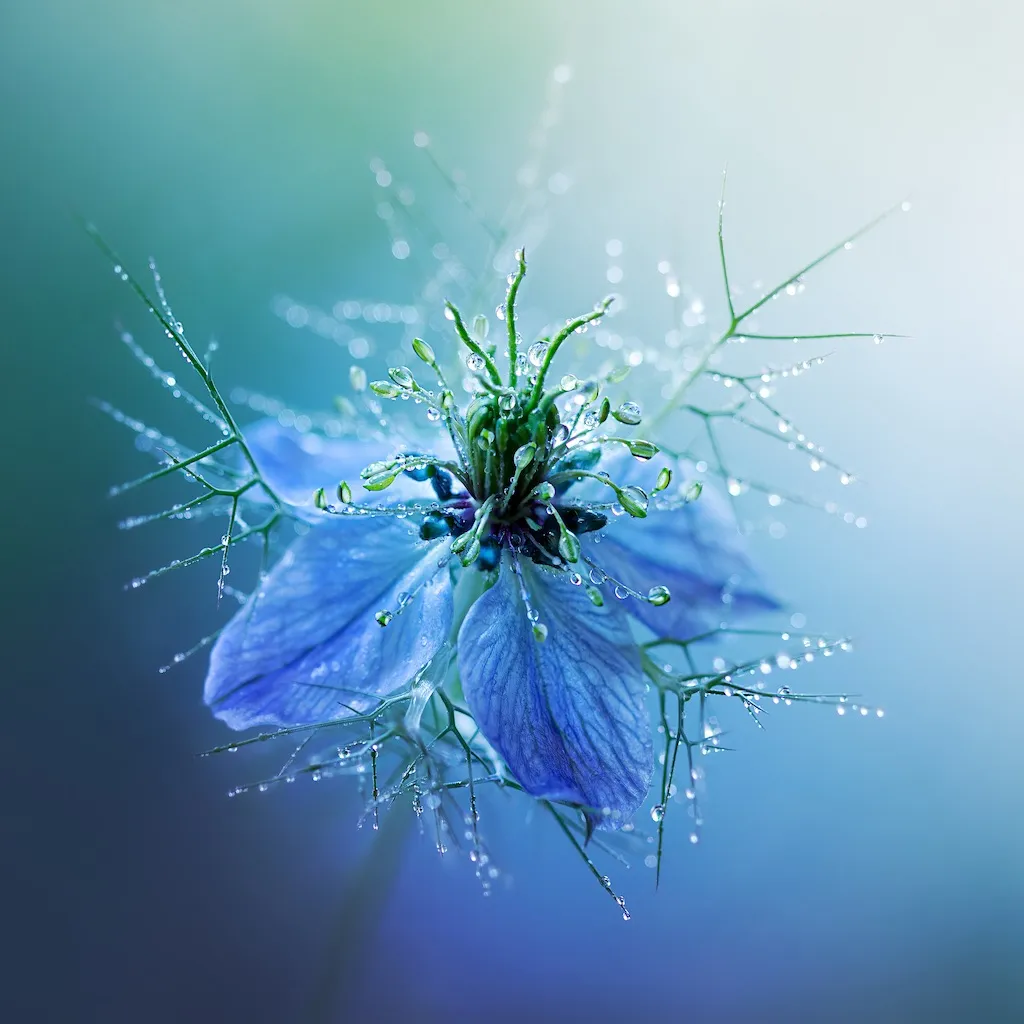
‘Love-in-the-Mist (Nigella damascena) is the epitome of early summer for me. I have always been fascinated by the variety of nigella flowers. From the bud to the dried seed capsule – each phase holds its own secret. In this case I was intrigued by the details of the stamens and petals, which are surrounded by net-like leaves. Shortly after a rain shower, the tiny drops of water caught in the leaves made me think of a sparkling crown on the bloom. I took the picture in my garden in natural evening light and converted it in post-processing to a very cool blue-green background to match the blue of the flower.’ Claudia Gaupp
Moss Springtail – Alexis Tinker-Tsavalas
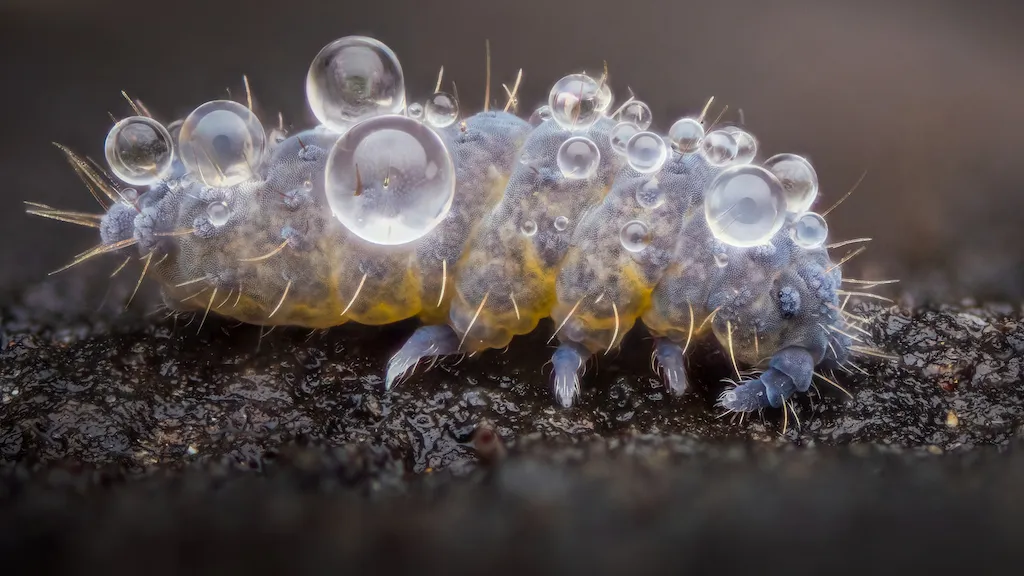
‘While searching for macro subjects on dead wood in winter I came across this springtail (Neanura muscorum) covered in dew droplets. Normally this species is quite active, which makes focus stacking almost impossible, but this individual stayed quite still, giving me the opportunity to get a high magnification focus stack. I used Zerene Stacker to combine the frames and sharpened the final image with Topaz DeNoise AI.’ Alexis Tinker-Tsavalas
Last Flight – Harald Cederlund
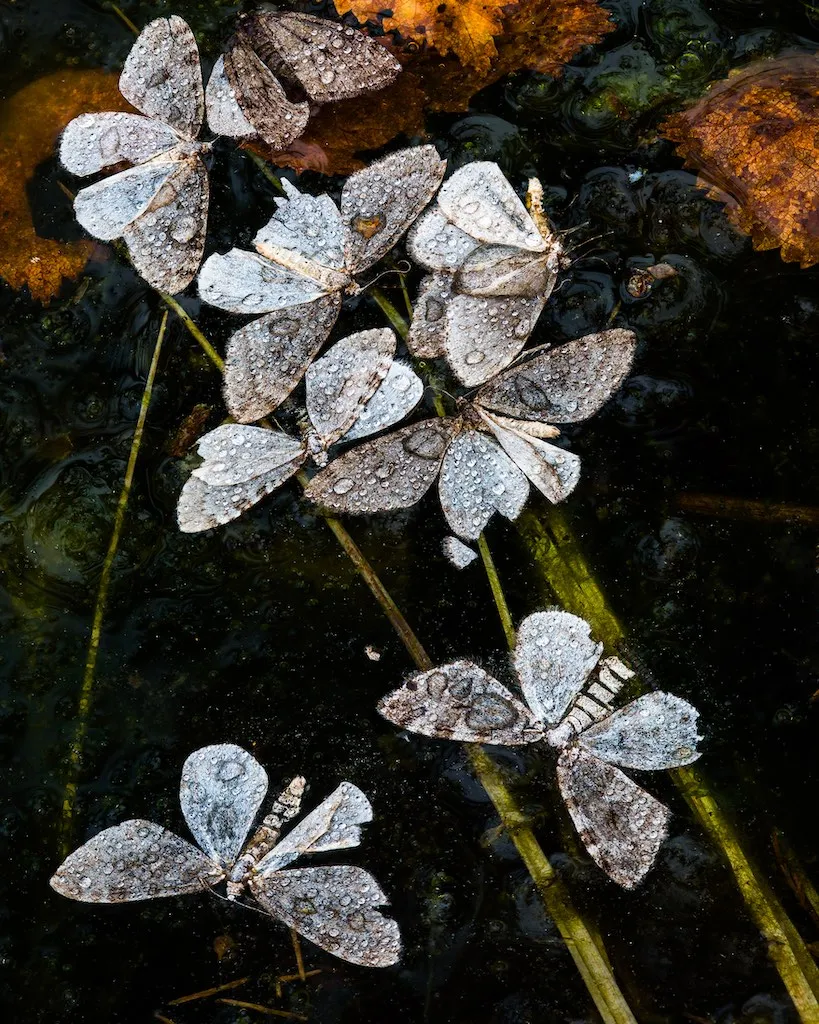
‘In early autumn, large quantities of moths were swarming in the mountain birch forest of Grövelsjön, Sweden – giving the hike through it a certain dream-like quality. My hiking buddy wasn’t feeling great, so we had to stay and rest in a mountain station, allowing me time to explore the immediate surroundings with my camera. I followed the trail down to Linnés källa – a spring that was supposedly discovered by the botanist Carl Linnaeus. Its surface was littered with large quantities of dead moths, along with some autumn leaves, grasses and algae. It looked to me as if the moths were still dancing over a meadow somewhere, taking one last flight. Later on, I combined five frames in Zerene Stacker to give a greater depth of field.’ Harald Cederlund
Long Over Dew – Pete Burford

‘At Mousecroft pool, Shrewsbury, I photographed this damselfly covered in dew during the early morning hours, at around 3am, in May. Given that insects are cold-blooded and need warmth to move, they typically rest at night. The sudden drop in temperature causes dew to cling to them. This moment is ideal for portraits as they cannot move or fly. As they warm up with the rising sun in the morning, they wipe away the moisture and fly off. To enhance the visual appeal, I used a coloured background card to add contrast and additional hues to the image. Afterwards, I stacked the frames in Helicon Focus, edited in Lightroom and Photoshop and then finished off with Topaz DeNoise.’ Pete Burford
Pond Geometry – Abby Raeder
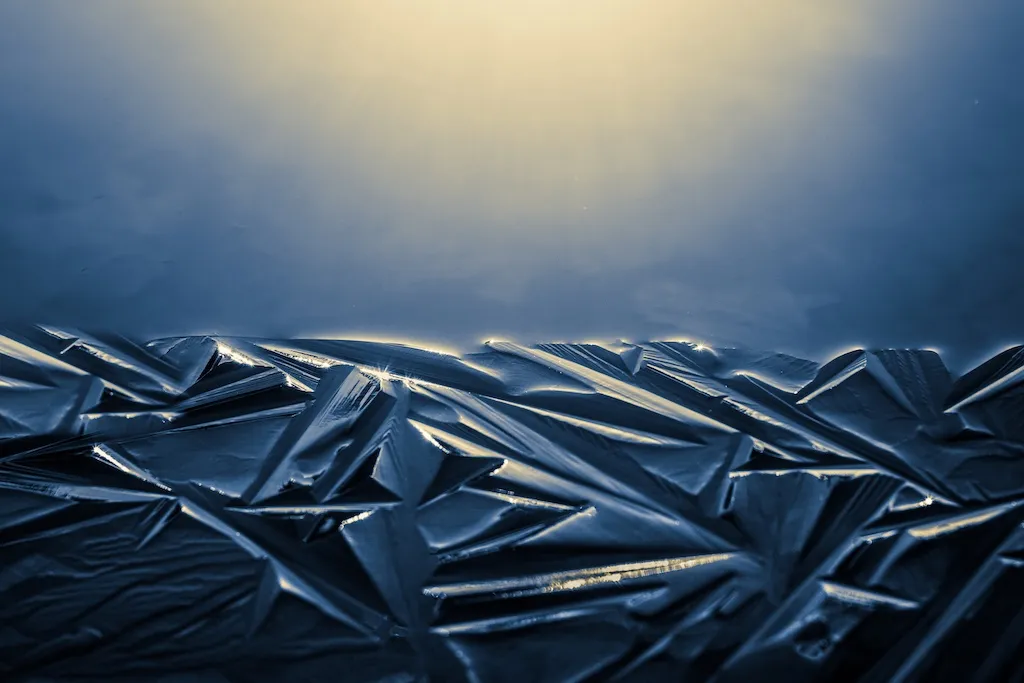
‘The earliest signs of a changing season are captivating to me. By mid-November, nights become bitingly cold. At morning’s light, I visited a pond in Vermont to find the first ice of the season. For me, this scene is thrilling beyond words. Seeing the physical change of water into a striking geometric marvel is an experience that makes me appreciate the glories of life.’ Abby Raeder
Between the Stars - Tibor Litauszki (overall winner)

‘In Germany, where I live, there are many clear and slow-flowing streams that provide excellent habitat for alpine newts. I have been following their lives for years, and last year was no exception. A few days after the frogs lay their eggs, at dusk, the newts appear and feast on the spawn all through the night. I wanted to capture this moment underwater. To do this, I placed my camera in an underwater housing, attached it with weights, and placed it under the frogs’ eggs. I was a bit nervous at first because I wasn't sure if the underwater housing was completely waterproof. But I figured that if no bubbles appeared, my camera would stay dry. I manually set the focus on the lens beforehand and hoped to get lucky. Waiting nearby until it got dark, I illuminated the first newt that appeared with an LED light and triggered the camera with a homemade wired remote release.’ Tibor Litauszki
Find out more about the Close-up Photographer of the Year Challenge
